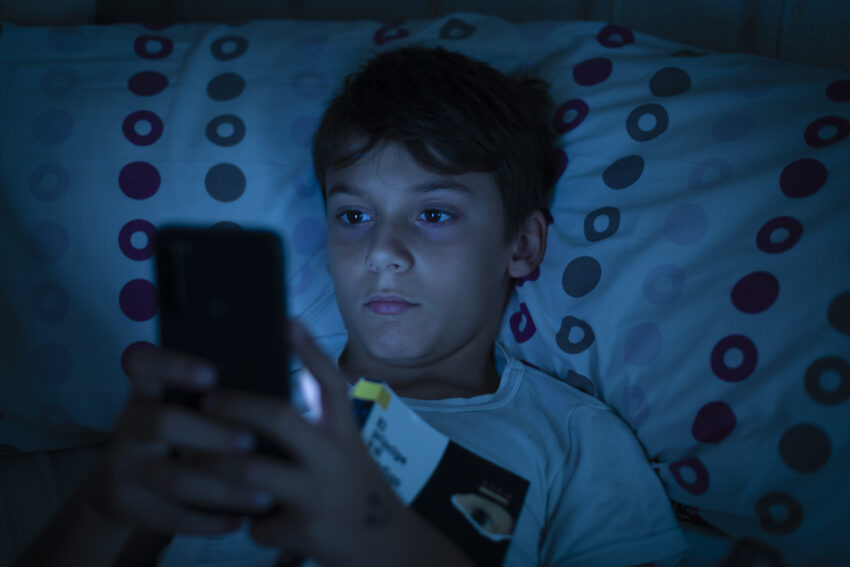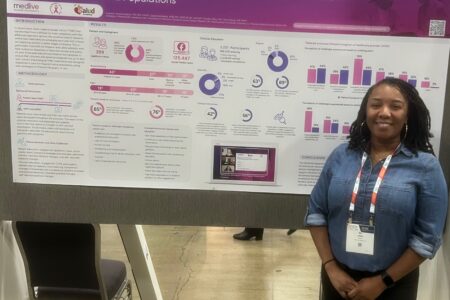
Share On Social!
There’s a lot of good that’s come out of the digital age, including telehealth, which allows physicians to meet with their patients from a distance.
However, the digital age can also pose health risks, especially for young children.
Excessive screen time in children is linked to a higher risk for heart-related complications, including heart disease, according to a new study by the American Heart Association.
Let’s go over the study’s key findings and find ways to determine what’s a healthy amount of screen time for your loved ones.
Key Study Findings: Screen Time and Heart Disease Risk
The study examined excessive screen use using data from a group of 10-year-olds in 2010 and a group of 18-year-olds in 2000, according to the study news release.
To explore the relationship between screen time and cardiometabolic risk, researchers looked at screen use, which included watching TV, movies, gaming, using phones, tablets, or computers during leisure time.
Based on the data, researchers learned that increased screen time in children and young adults was linked to a higher risk for cardiometabolic illness, including high blood pressure, high cholesterol, and insulin resistance.

Researchers suggested that sleep, or lack thereof, may have something to do with the connection, finding that risks were strongest among those who slept fewer hours, according to study lead author Dr. David Horner of the Copenhagen Prospective Studies on Asthma in Childhood (COPSAC) at the University of Copenhagen in Denmark.
“In childhood, sleep duration not only moderated this relationship but also partially explained it: about 12% of the association between screen time and cardiometabolic risk was mediated through shorter sleep duration,” Horner said. “These findings suggest that insufficient sleep may not only magnify the impact of screen time but could be a key pathway linking screen habits to early metabolic changes.”
What’s more, each hour of extra screen time adds to a calculated score, which simulates increased cardiometabolic risk.
“It’s a small change per hour, but when screen time accumulates to three, five or even six hours a day, as we saw in many adolescents, that adds up,” Horner told the American Heart Association. “Multiply that across a whole population of children, and you’re looking at a meaningful shift in early cardiometabolic risk that could carry into adulthood.”
While there are many factors that contribute to cardiometabolic risk, Horner suggests that screen time may become as common a health issue as diet and physical activity, which are often discussed at pediatric appointments.
The stark increase in screen use highlights the need for early intervention.
Ways to Cut Back on Screen Use to Improve Health
Screens are a big part of daily life in the 21st century. Cutting screen usage can be difficult.
One way to cut back on excessive screen use is by focusing on sleep, according to Dr. Amanda Marma Perak, chair of the American Heart Association’s Young Hearts Cardiovascular Disease Prevention Committee.
“If cutting back on screen time feels difficult, start by moving screentime earlier and focusing on getting into bed earlier and for longer,” Perak said in the news release.
In addition, adults can break the cycle with their children by setting a better example.
“All of us use screens, so it’s important to guide kids, teens and young adults to healthy screen use in a way that grows with them. As a parent, you can model healthy screen use – when to put it away, how to use it, how to avoid multitasking. And as kids get a little older, be more explicit, narrating why you put away your devices during dinner or other times together,” she explained.
Many parents turn to screens to keep their children occupied or free from boredom.
According to Perak, boredom can be healthy for creativity.
“Make sure they know how to entertain and soothe themselves without a screen and can handle being bored! Boredom breeds brilliance and creativity, so don’t be bothered when your kids complain they’re bored. Loneliness and discomfort will happen throughout life, so those are opportunities to support and mentor your kids in healthy ways to respond that don’t involve scrolling.”
Make a Plan to Cut Back Excessive Screen Use to Improve Health
Sleep and limited screen time are important for children and young adults because they are still developing their minds.
That’s why the Center of Excellence on Social Media and Youth Mental Health and the American Academy of Pediatrics developed the five C’s to help parents make a plan for responsible media use at any impressionable age, especially when it interferes with sleep.
The Five C’s:
- Child – who are they and how do they react to media, what is their motivation for using it?
- Content – what is worth their attention?
- Calm- how do they calm their emotions or go to sleep?
- Crowding out – what does media get in the way of?
- Communication – How do you talk to your child about media so they make responsible and informed decisions?
For instance, media use between 0 to 18 months of age should be limited to video calling applications that help them establish relationships and learn how to interact with loved ones.
They are at an age where they are learning to self-soothe so playing media might hinder the process of learning this technique and set them back.
What’s more, children younger than 4 are often given a screen to keep them calm, which can be difficult when they are learning how to process emotions.
For more advice on screen use at any age visit the American Academy of Pediatrics online.
Improve Health in Your Community
How is the state of health in your community?
Find out by downloading a Salud America! Health Report Card for your town!
Enter your county name and get auto-generated local data with interactive maps and comparative gauges on several health indicators. This can help you visualize and explore local issues in education, housing, transportation, food, health, and more.
See how your county stacks up compared to the rest of your state and nation.
Then email the Report Card to local leaders to raise awareness, include the data in a presentation or grant proposal, or share it on social media to drive healthy change in your community!
Explore More:
Healthy Families & SchoolsBy The Numbers
142
Percent
Expected rise in Latino cancer cases in coming years



